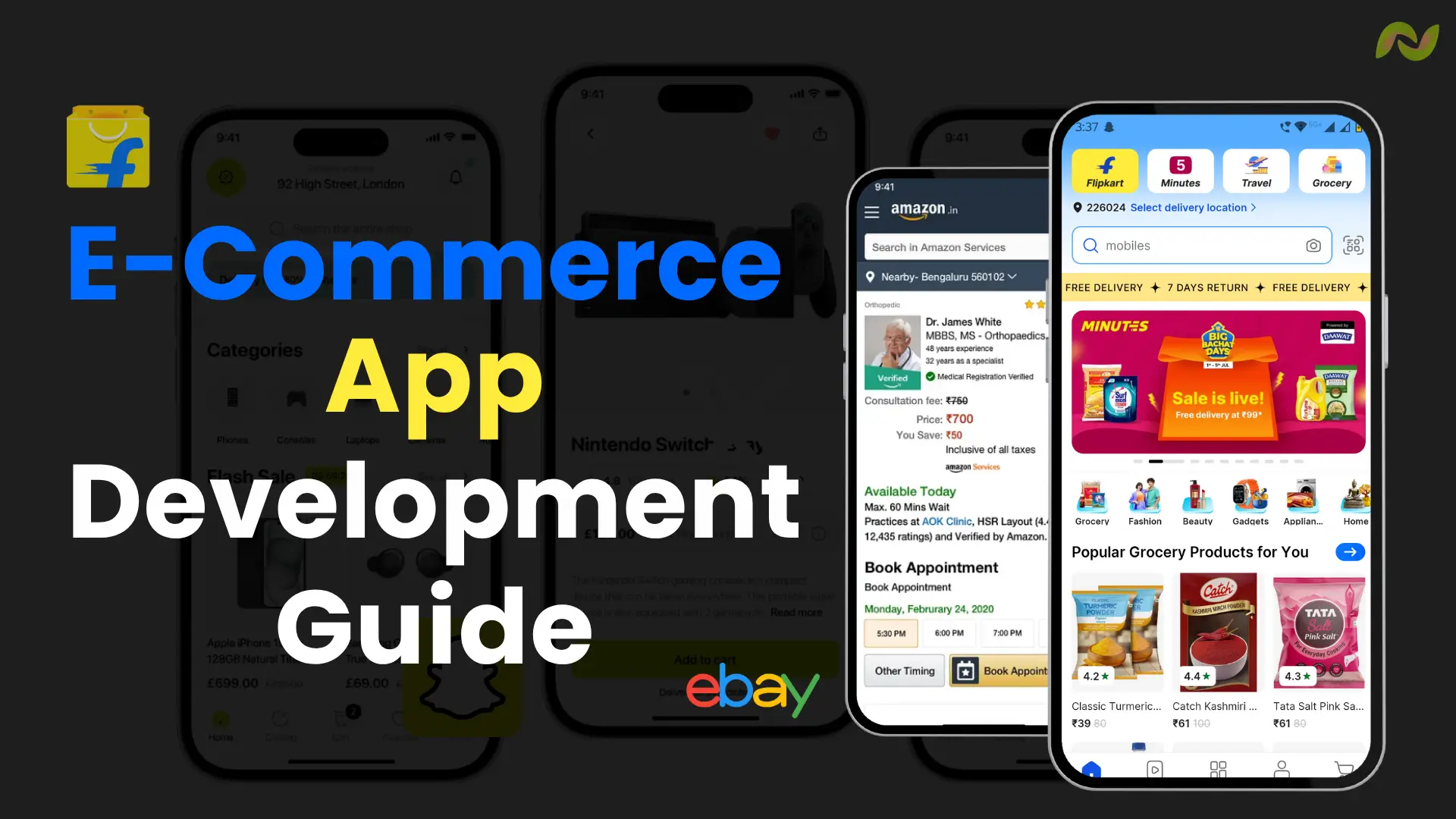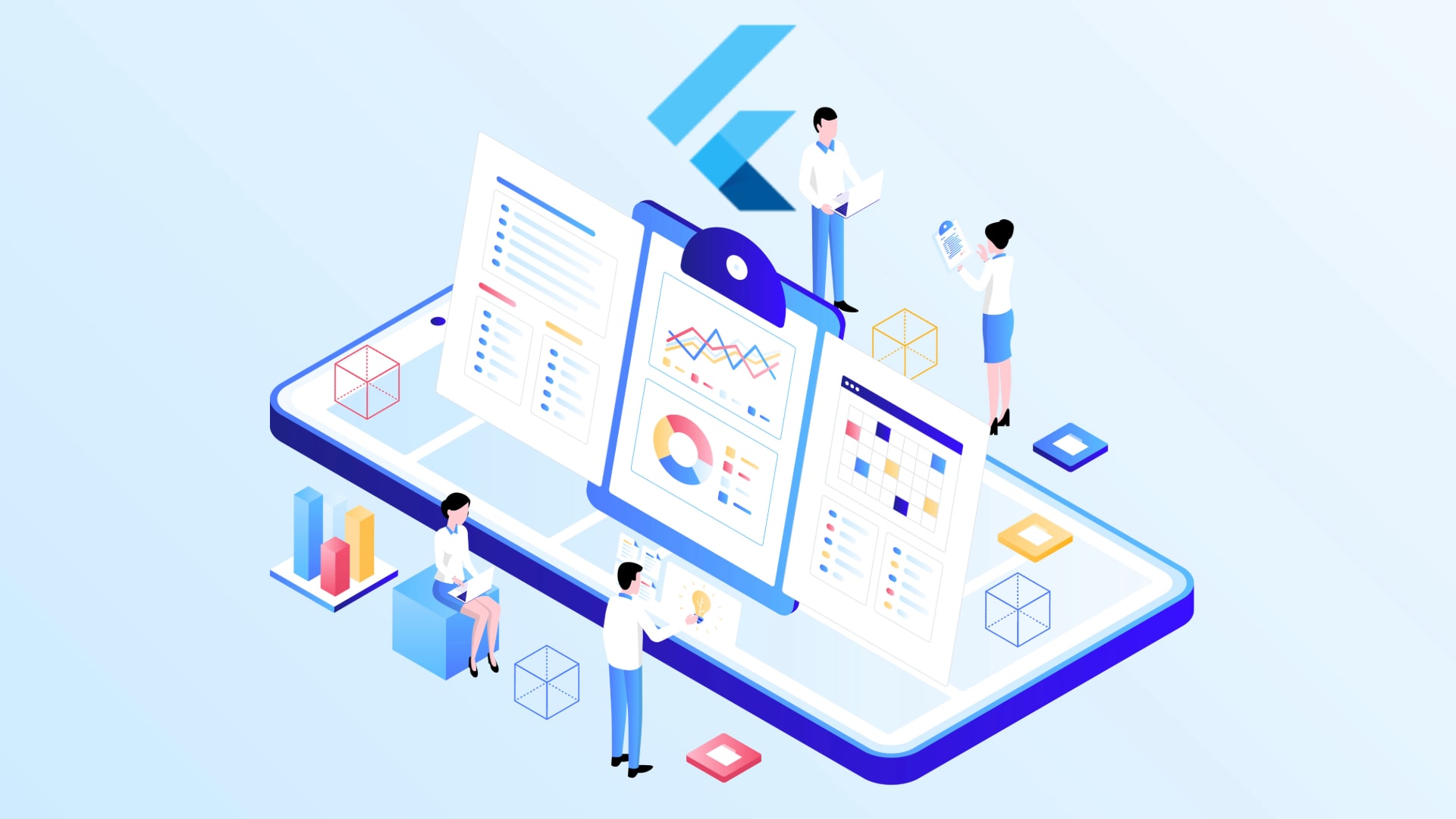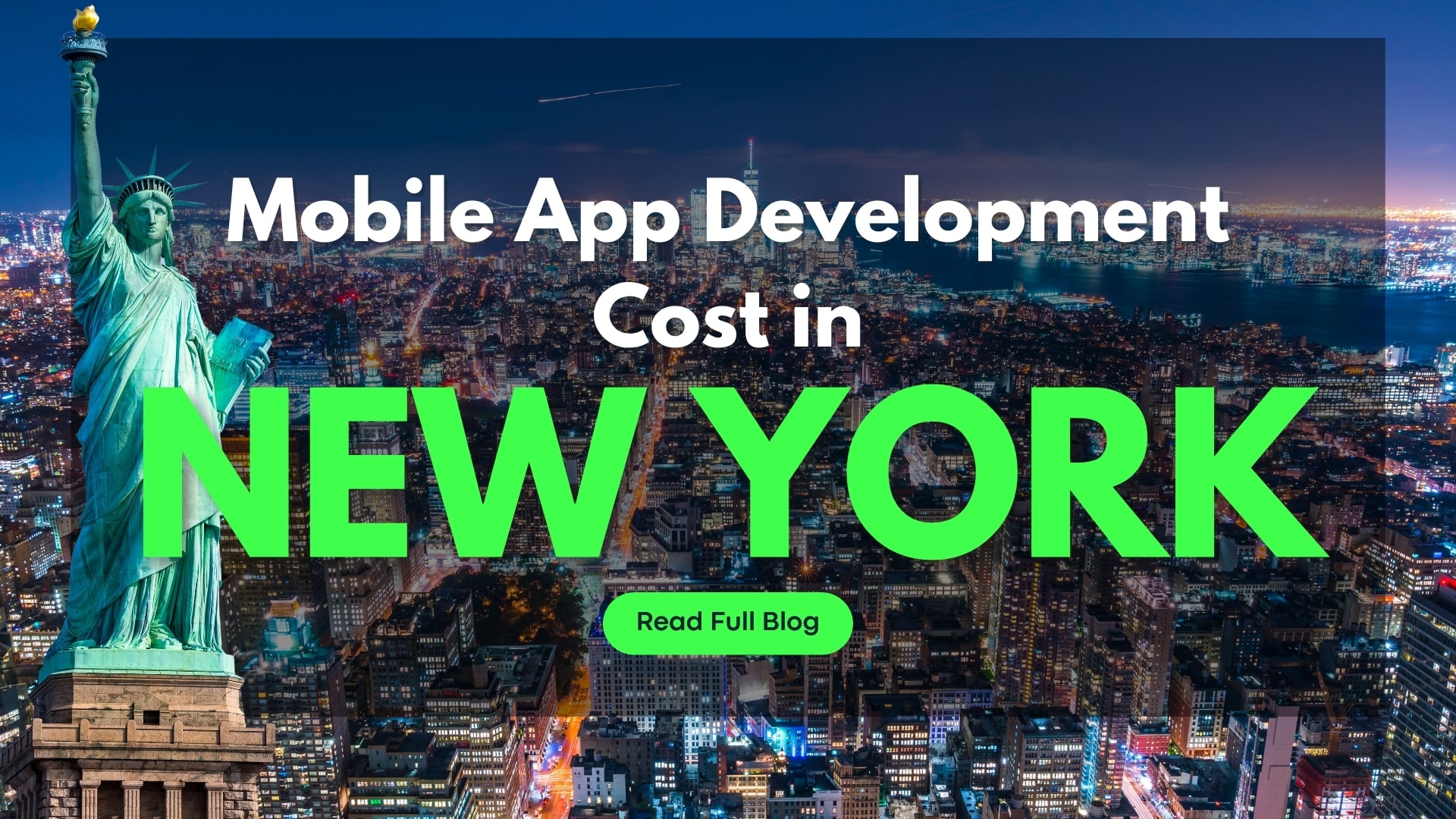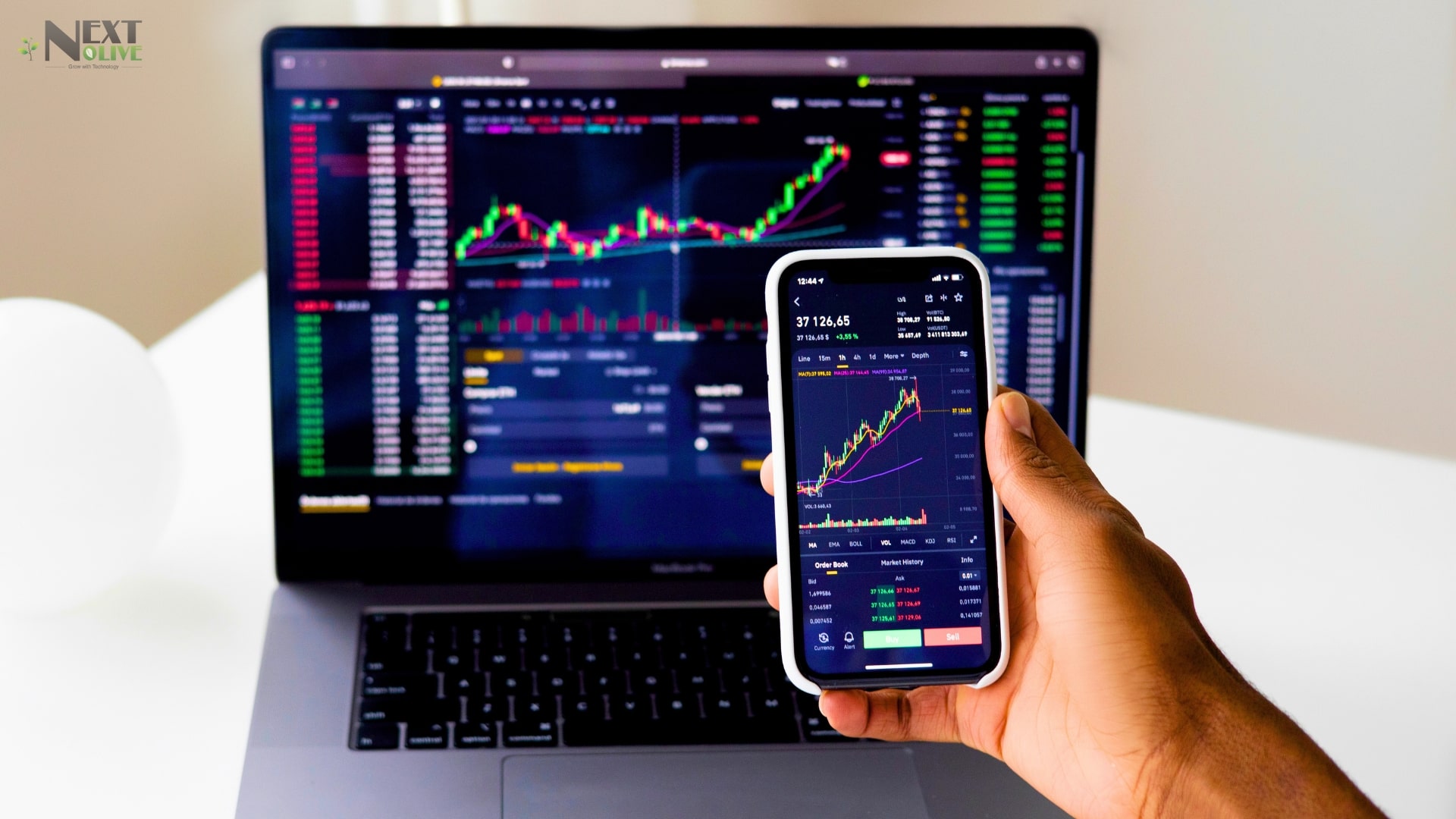How to Build an eCommerce App Development: A Complete Guide
Developing an e-commerce application might seem challenging at first, but with the right support, it becomes significantly more manageable. This guide aims to simplify the process of ecommerce app development straightforwardly. Whether you’re starting a new online shop or making your existing business mobile, creating an intuitive and dependable app is an essential step. We will guide you through every stage of the journey, from planning and design to development and launch. By the end, you’ll have a comprehensive understanding of what is required to turn your eCommerce app concept into reality.
Table of Contents
ToggleWhat is an E-Commerce App?
An e-commerce application is a mobile platform that allows individuals to purchase and sell goods or services online using their smartphones or tablets. It functions like a compact shopping center that fits in your pocket, allowing you to explore various products, add them to a shopping cart, and complete payments within the app. Whether you’re buying clothing, gadgets, groceries, or even scheduling services, it can all be performed from the comfort of your own home. This method saves time, is extremely user-friendly, and is available every time, and there is no need to physically visit a store. Well-known examples of eCommerce applications include Amazon, Flipkart, and Myntra. With just a few clicks, your order is submitted, and it arrives right at your door. eCommerce apps have transformed shopping into a quicker, easier, and more convenient experience for everyone.
What is eCommerce Application Development?
Mobile app development for eCommerce focuses on building applications or websites that enable buying and selling items over the internet. It is like creating a digital store where shoppers can explore products, place items in a shopping cart, make secure payments, and receive updates regarding their purchases. It’s like transforming a physical store into a digital version accessible on smartphones, tablets, or computers. eCommerce software developers ensure that everything operates seamlessly, has an appealing design, and is user-friendly, resulting in a smooth experience for both store owners and customers. This process involves designing the app’s appearance, implementing secure payment methods, organizing product listings, and even managing aspects like customer feedback or order tracking. In conclusion, the goal is to make online shopping quick, straightforward, and dependable for everyone involved.
Global Market Statistics of eCommerce Apps in 2025
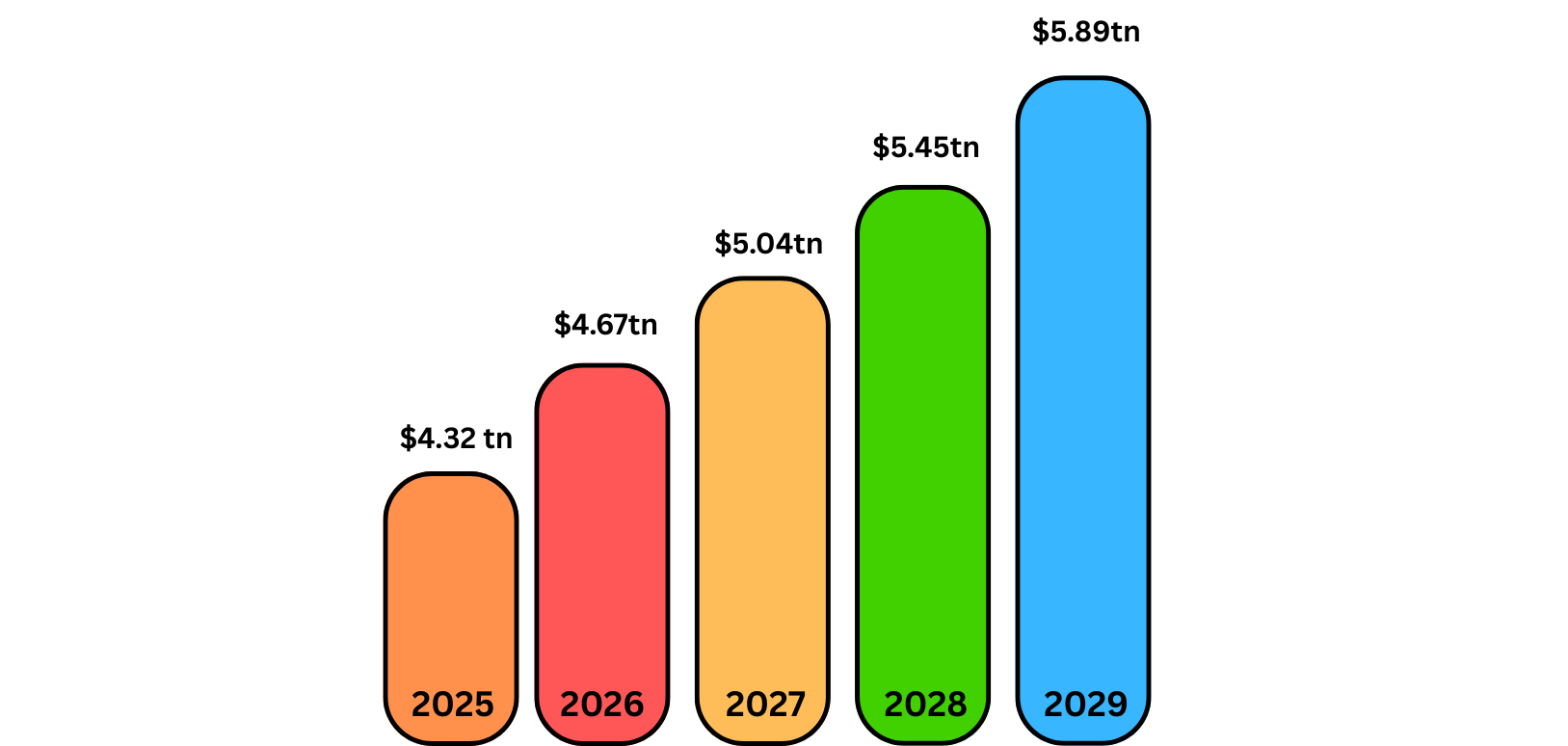
According to a report by Statista, the market revenue of eCommerce applications is expected to reach $4.32 trillion by the end of 2025. With a CAGR of 8.02%, the revenue could reach $5.89 trillion by 2029.
Types of eCommerce Models
[1] Business to Consumer (B2C)
B2C is the most widely used form of eCommerce that we encounter daily. It occurs when companies sell goods or services directly to individual customers over the internet. It is like shopping on platforms like Amazon or ordering meals via apps such as Uber Eats. You browse through options, select what you desire, make a payment online, and it gets delivered right to your home. Multi-Vendor Marketplace Development for normal people So it is fast, Secure, and convenient.
[2] Consumer to Business (B2B)
In the C2B model, individuals provide their services or products to businesses. A notable example includes freelancers who create logos, write articles, or perform voiceovers for companies. Sites like Fiverr or Upwork link these freelancers with businesses in need of their expertise. This approach allows individuals to monetize their skills while companies can accomplish tasks without hiring permanent employees.
[3] Business to Business (B2B)
B2B refers to where one business markets goods or services to another business. For example, a manufacturer of computer components may sell them in bulk to a company that produces laptops. These transactions typically involve significant quantities and extended agreements. It focuses not on selling to individual customers but rather on supporting other businesses in their operations or growth.
[4] Consumer to Consumer (C2C)
C2C takes place when regular individuals sell items to each other online. This could be via platforms like eBay, Facebook Marketplace, or OLX, where someone might offer a used phone or furniture for sale. It’s an excellent method to earn extra cash from belongings you no longer need, and buyers can often find great bargains from other people.
[5] Business to Administration (B2A)
In this model, companies provide goods or services to governmental or public entities. For example, a technology firm might develop software for a local government agency or sell office supplies to educational institutions. These transactions frequently involve formal bids or contracts and enhance public services through private sector solutions.
[6] Consumer to Administration (C2A)
C2A occurs when normal individuals engage with the government via online services. This includes activities such as paying taxes online, applying for documents like permits or licenses, or submitting complaints. It saves time and reduces hassle by bypassing long queues at government offices, making services more accessible to everyone.
General Features of eCommerce Apps
[1] User-Friendly Interface
A simple and approachable layout ensures a seamless shopping experience. Users should be able to browse, select, and purchase effortlessly without confusion.
[2] Search and Filter Options
Shoppers can easily locate items using keywords or filters such as size, price, or color. This saves time and helps refine options.
[3] Secure Payment Gateway
Customers seek reassurance when making payments. A reliable eCommerce app incorporates trusted payment methods that safeguard card and wallet information.
[4] Multiple Payment Options
The application should support payments via credit cards, debit cards, UPI, wallets, and cash on delivery. Everyone has their preferred payment method.
[5] Product Categories and Tags
Products must be categorized into sections like “Men’s Clothing” or “Electronics.” This simplifies the browsing process without excessive scrolling.
[6] Customer Login & Profiles
Allows users to create accounts, facilitates faster checkouts, and saves their favorites, previous orders, and delivery addresses for future use.
[7] Wishlist or Favorites
Sometimes, shoppers aren’t ready to make a purchase but want to remember an item. Wishlists enable customers to save their desired products for later.
[8] Cart Management
Customers should be able to add or remove items from their shopping cart before finalizing the purchase. They also need to view the total cost and modify quantities.
[9] Push Notifications
The app can send notifications regarding sales, new products, or abandoned cart items. It acts as a gentle reminder for customers not to miss out.
[10] Order Tracking
After placing an order, customers want updates on their delivery status. A tracking feature informs them from shipping to arrival.
[11] Ratings and Reviews
Shoppers can read reviews from other buyers before making a decision. Genuine feedback builds trust and assists customers in making informed choices.
[12] Customer Support Chat
Providing support through chat or phone within the app helps address issues quickly, whether related to delayed orders or returns.
[13] Return and Refund Policy
Simple return processes and clear refund policies instill confidence in customers when purchasing.
[14] Loyalty Rewards or Coupons
Offering discounts, coupons, or loyalty points makes customers feel valued and encourages them to shop again.
[15] Social Media Sharing
Allowing users to share products or purchases on platforms like Instagram or WhatsApp promotes the app and makes shopping enjoyable and social.
[16] Product Recommendations
The app can recommend items based on browsing or purchase history. It’s like having a personal shopping assistant highlighting items you may like.
[17] Inventory Management
On the backend, the app monitors stock levels so that displayed products are indeed in stock. This helps avoid the “Out of Stock” notices to users.
[18] Personalized User Experience
The app can tailor what users see according to their behavior, such as showcasing more sports gear to those who purchase fitness-related items.
[19] Guest Checkout Option
Some customers prefer a quick purchase without account creation. Enabling checkout without signing up makes the process faster and more convenient.
[20] Fast Loading Speed
A faster app ensures users can browse, tap, and purchase promptly, enhancing their shopping enjoyment.
Various Crucial Panels of eCommerce Apps
[1] Admin Panel
The admin panel serves as the command center for an e-commerce application. It enables business owners and platform administrators to oversee various aspects of the platform, including user management, order tracking, and vendor oversight. An eCommerce software development company ensures the panel is equipped with robust tools and clear dashboards so that admins can ensure that operations run smoothly, securely, and efficiently in the background.
Dashboard Overview
Provides a quick snapshot of orders, revenue, user activity, and overall performance, keeping admins informed.
User Management
Admins can view, edit, or delete user accounts for both customers and vendors, ensuring a safe and engaged user community.
Product Management
Allows for the approval, rejection, or modification of product listings to ensure high quality and relevance.
Order Management
Enables tracking of order status, delays, and issues, helping to organize processes and resolve any disputes.
Payment and Transaction Control
Displays the flow of payments from customers to vendors, making it easier to monitor failed or late transactions.
Vendor Management
Admins can assess vendor information, approve new sellers, or block questionable vendors to maintain trust on the platform.
Promotions and Discounts
Grants the ability to create and manage promotional discount codes, helping to attract more customers and increase sales.
Analytics and Reporting
Offers insights into sales, traffic, and overall performance, facilitating informed decision-making.
Review & Feedback Moderation
Admins can oversee product reviews and eliminate inappropriate content, ensuring a fair review system.
Category & Inventory Control
Helps in organizing products by category and managing bulk inventory data for ease of navigation
Content & Banner Management
Let’s admins refresh banners, homepage content, and promotional images to keep the app visually appealing and current.
Notification System
Enables admins to send alerts or updates to users and vendors regarding promotions, outages, or policy changes.
[2] Customer Panel
The customer panel is the user interface where customers explore, purchase, and manage their orders. eCommerce app developers design this panel for simplicity and speed, which provides a pleasant shopping experience. Whether seeking products, placing an order, or tracking deliveries, this panel puts full control in the hands of the shopper.
Sign-Up/Login
Quick and easy registration through email, phone number, or social media streamlines the onboarding process.
Product Browsing
Customers can navigate through product listings with easy-to-read images, prices, and ratings for seamless shopping.
Search and Filter Options
Helps in quickly locating desired products using filters for categories, price points, or brands
Product Details Page
Displays comprehensive information, including descriptions, specifications, reviews, and availability to help customers make informed choices.
Add to Cart
Users can add products to their cart for immediate checkout or save for later purchases, making it user-friendly.
Wishlist
Enables customers to save their favorite items for future consideration, encouraging return visits.
Secure Checkout
Offers a fast and safe payment process with various payment methods, fostering trust and convenience.
Order Tracking
Let customers monitor their order’s status and expected delivery time, enhancing transparency.
Order History
Keeps a record of previous orders and invoices for easy access, helpful for reordering or managing spend.
Customer Support Access
Connects users to assistance through chat, email, or phone for prompt issue resolution, building trust.
Review & Rating System
Customers can provide feedback on products and vendors, aiding other buyers and enhancing vendor reputation.
Profile & Address Management
Allows users to update personal details, change passwords, and manage addresses for a smoother shopping experience.
[3] Vendor Panel
The vendor panel is designed for sellers to manage their online stores effectively. It encompasses everything from product uploads to order handling and earnings tracking, aimed at simplifying the selling process for all users.
Vendor Dashboard
Displays total sales, pending orders, and product statistics, providing a quick overview of business status.
Product Uploading
Vendors can easily add new products along with images, pricing, and stock details.
Inventory Management
Allows sellers to adjust stock levels and handle out-of-stock notifications, helping to avoid overselling.
Order Management
Facilitates viewing new orders, processing shipments, and managing returns for a streamlined order process.
Earnings Overview
It shows daily, weekly, and monthly income statistics to help vendors assess performance and strategize growth.
Transaction History
It provides access to past payouts and transaction records, keeping financials organized and clear.
Discount & Deal Creation
Allows vendors to create targeted discounts for products to enhance visibility and sales.
Customer Messages
Promotes direct communication with customers by enabling vendors to respond to inquiries, fostering trust.
Review Management
Vendors can monitor product feedback and ratings to maintain credibility and address customer concerns efficiently.
Profile & Store Settings
It enables the vendors to update details about their store, such as logo, banner, name, etc.
Shipping & Delivery Settings
Vendors can set the shipping address and other crucial delivery-related settings, such as contact, name of receiver, etc.
Sales Reports & Analytics
See the revenue and sales-related data in visuals such as charts, graphs, and make data-driven and informed decisions.
Follow an End-to-End E-Commerce Mobile Application Development

[1] Market Research and Requirement Gathering
This is the very first stage of the development process. Before starting the development, it’s essential to understand what the market demands. This includes examining successful eCommerce apps, addressing user complaints, and identifying emerging trends. Engage with stakeholders and potential users to determine the essential features. This phase helps to clarify what the app should deliver and how it can differentiate itself. It’s important to map out the roadmap before starting the development process.
[2] Project Planning and Roadmap Creation
After determining what to create, devise a comprehensive and robust plan. This involves setting deadlines, allocating tasks to team members, and segmenting the work into phases. Select the necessary tools, technologies, and budget. Also, ensure to use an appropriate development methodology such as Agile. A well-defined roadmap keeps everyone aligned and aware of upcoming steps.
[3] UI/UX Designing and Prototype Development
At this stage, the app begins to develop its visual identity. In this stage, emphasize the aesthetics and user experience, ensuring it is user-friendly, easy to navigate, and attractive. Designers produce wireframes and interactive prototypes to test the user flow without any coding at this point. It’s comparable to planning and testing the layout of a store before constructing it, ensuring a pleasant shopping experience for customers.
[4] App Development and Coding
Now we enter the construction phase. Developers start writing the actual code to enable the app to operate on mobile platforms such as Android and iOS. This includes implementing features like product browsing, cart functionality, payment options, user login, and more. Backend systems like inventory and order tracking are also integrated. Gradually, the app becomes operational and interactive, ready for actual use. Shopify app creation by Shopify Plus developers would be cost-effective if you have budget constraints.
[5] QA Testing and Debugging
Before the launch, conduct thorough testing to ensure everything functions as it should. This involves identifying bugs, non-functional features, or anything that could potentially confuse or frustrate users. Both manual and automated tests should be performed to detect issues early on. Debugging refines the app to ensure it runs smoothly, quickly, and reliably. It’s similar to examining every part of a store before welcoming customers.
[6] Deployment and Launch
Once the app has been fully tested and is prepared for release, publish it on app stores such as Google Play and the Apple App Store. This step includes setting up the app store listings, uploading the final versions, and complying with platform requirements. Launch extensive marketing and promotional campaigns to generate user excitement and allow users to download and utilize it.
[7] Post-Launch Support and Maintenance
Even after the launch, keep an eye on the app’s performance, address any new bugs, and continuously improve it with updates based on user feedback. Regular maintenance ensures that the app remains secure and compatible with new devices and operating system updates. Think of it as managing the store, keeping the inventory full, and ensuring everything operates seamlessly without any issues.
Select an Appropriate Technology Stack
[1] Frontend
Web App
- Framework/Library: React.js / Next.js / Vue.js
- Styling: Tailwind CSS / Sass / Styled Components
- State Management: Redux / Zustand / Recoil / React Query
- Build Tool: Vite / Webpack
- Authentication: Firebase Auth / OAuth / NextAuth.js
Mobile App
- Cross-platform: React Native / Flutter / Ionic / Expo
- Native: Swift (iOS) / Kotlin (Android)
- Navigation: React Navigation / Flutter Navigator
- State Management: Redux / MobX / Riverpod (Flutter)
[2] Backend
Language & Framework:
- Node.js + Express.js / NestJS
- Django (Python)
- Laravel (PHP)
- Spring Boot (Java)
- Ruby on Rails
API Type:
- REST API / GraphQL
Authentication & Authorization:
- JWT / OAuth 2.0
- Auth0 / Firebase Auth / Supabase
Payments Integration:
- Stripe / PayPal / Razorpay / Braintree
[3] Databases
- Relational DB: PostgreSQL / MySQL / MariaDB
- NoSQL: MongoDB / Firebase Firestore
- Caching: Redis / Memcached
- Search: Elasticsearch / Meilisearch / Algolia
[4] Cloud / DevOps / Hosting
- Cloud Providers: AWS / Google Cloud / Azure / DigitalOcean / Vercel
- CI/CD: GitHub Actions / GitLab CI / Jenkins / CircleCI
- Containerization: Docker
- Orchestration: Kubernetes (K8s) / Docker Compose
- Web Server: Nginx / Apache
[5] eCommerce Specific Technologies
- Cart & Checkout Logic: Custom or via headless commerce platforms
- Product Management: CMS (e.g., Strapi / Sanity) or custom admin panel
- Order Tracking & Shipping APIs: Shippo / EasyPost / Shiprocket
- Inventory Management: ERP integration or custom backend
[6] Testing & Quality Assurance
- Unit Testing: Jest / Mocha / Jasmine
- Integration & E2E Testing: Cypress / Playwright / Selenium
- Linting & Formatting: ESLint / Prettier
- Monitoring & Error Tracking: Sentry / LogRocket / Datadog
Emerging Technologies to Build eCommerce Mobile Apps
[1] Artificial Intelligence (AI)
AI serves as the intelligence behind smart applications. In the world of e-commerce, it helps applications in understanding consumer preferences by learning what they like, suggesting items, and even addressing inquiries through chatbots. This creates a more personalized and faster shopping experience, similar to having a helpful shop assistant on hand.
[2] Machine Learning (ML)
Machine Learning observes user behavior over time, enhancing the application’s intelligence. For example, it can suggest products based on previous purchases or browsing history. The more users engage with the app, the better ML becomes at predicting their future preferences.
[3] Cloud Technology
Cloud technology enables eCommerce applications to store and process data online rather than solely depending on the device’s storage. This leads to faster app performance, accommodates more users simultaneously, and allows for updates without the need for reinstallation. Additionally, it helps businesses cut costs and manage data more securely.
[4] Blockchain Integration
Blockchain may seem complicated, but it fundamentally acts as a digital record that ensures all transactions are secure and transparent. For eCommerce applications, it can facilitate secure payments, prevent fraud, and even monitor the path of a product from seller to buyer. This fosters trust between the app and its users.
[5] AR / VR/ XR
Technologies such as Augmented Reality (AR), Virtual Reality (VR), and Extended Reality (XR) transform shopping into an engaging, interactive experience. With AR, shoppers can visualize how a product fits into their environment or on themselves before making a purchase. VR takes this a step further by providing virtual showrooms. These technologies enhance users’ confidence in their buying decisions.
Popular Platforms to Select for eCommerce App Development
[1] eCommerce Android App
Android ranks among the leading platforms for eCommerce applications due to its vast global user base. If your goal is to reach a broad and varied audience, particularly in countries like India or Brazil, choosing Android is a wise decision. Its open-source nature, adaptability, and compatibility with a wide range of devices, from budget to high-end, mean your app can reach more users without requiring high-end smartphones. Furthermore, managing updates and customizing features is generally simpler compared to other platforms.
[2] eCommerce iOS App
iOS is a great choice if you aim to attract users who are generally more inclined to make purchases online. Apple users tend to have greater spending power, which benefits eCommerce platforms. The platform is smooth, secure, and provides a premium experience, ensuring that your app looks and operates effectively. Although the development costs may be higher, the potential return on investment often justifies the expense. Additionally, Apple’s high quality standards ensures that your app functions reliably and securely.
[3] eCommerce Web App
Developing a web platform is crucial if you want users to shop from their desktops or prefer not to install an app. It offers flexibility, is compatible with all browsers, and does not require downloading. A well-designed eCommerce website can help you quickly reach users, particularly those who find products via Google search. It also enables you to present your brand effectively through a unique design and SEO-optimized content. Overall, it’s an excellent foundation or supplementary resource for your mobile application.
eCommerce Mobile App Development Cost in 2025
The eCommerce app development cost in 2025 depends on several crucial factors such as:
[1] Platform Choice
Selecting the right platform, whether it’s Android, iOS, or both, can significantly influence the overall expense of your app. Developing for a single platform typically results in lower costs, whereas creating an app compatible with both Android and iOS usually demands additional time, effort, and investment. Some companies opt for cross-platform development to reduce expenses, but this choice should align with your specific requirements and objectives.
[2] UI/UX Design
The visual design of your app is critical. An appealing, easy-to-navigate design facilitates a smoother shopping experience, which can lead to increased sales. However, creating an impressive design requires considerable time, especially if you desire custom animations, personalized layouts, or distinctive branding. A more refined and original design may increase costs, but it enhances your app’s visibility in a competitive market.
[3] Features and Complexity
The variety and nature of features included in your app can greatly impact your app development budget. An app with basic functions such as browsing and checkout will be less expensive than one featuring live chat, real-time tracking, AI-driven suggestions, or augmented reality previews. Complex features require more development time and thorough testing, which naturally increases expenses..
[4] Technology Stack
The technologies and tools chosen for your app’s development, such as programming languages, frameworks, and backend systems, can also affect costs. Certain tech stacks can be quicker and less costly to implement, while others might provide superior performance or greater flexibility but demand more skilled developers. Selecting the appropriate stack involves maintaining a balance between expenditure and future requirements.
[5] Location and Size of Development Team
The geographical location of your development team and its size can significantly influence your budget. Hiring developers from regions with lower hourly rates, like India or Malaysia, can be more economical than hiring teams in the US or Western Europe. Additionally, a larger team might speed up the development process, but can also lead to higher overall costs. It’s essential to find a suitable balance between cost, quality, and speed.
- Basic App: $15,000 to $30,000.
- Medium Complexity App: $30,000 to $100,000.
- Highly Complex and Large Application: $100,00 to over $350,000.
How to Select a Reliable eCommerce Mobile App Development Company?
Selecting a dependable eCommerce app development company can seem complicated, but it primarily involves knowing what to consider. Begin by evaluating their experience. Have they created apps similar to yours in the past or not? Review their previous projects and request client testimonials or feedback. A reputable company will willingly showcase its work and provide genuine reviews. Effective communication is crucial; you want a team that attentively hears your requirements, clarifies concepts clearly, and keeps you informed. Ensure they properly understand your business objectives, not only the technical aspects. Lastly, avoid opting for the lowest price; concentrate on value, support, and establishing a long-term relationship. A reliable company will be invested in your success just as much as you are. One such company is Next Olive, which has been providing its services in the realm of eCommerce for the past 13+ years. With its team of over 100 eCommerce developers, they have established their presence in over 20 different countries. Connect with them to maximize your ROI.
Conclusion
Ultimately, developing an eCommerce mobile app goes beyond just adding numerous features, but it’s about addressing genuine challenges faced by real users. Consider it as creating a digital store that conveniently fits into your customer’s pocket. While there are technical aspects to address, fundamentally, it’s about ensuring that the purchasing and browsing experience is smooth, personalized, and effortless. By focusing on your users’ actual needs and keeping things straightforward and dependable, you’re already at an advantage. Everything else can be enhanced as you progress and gain insights along the journey.
Frequently asked questions (FAQs)
Next Olive is the leading firm with over 13 years of experience and more than 100 talented and experienced developers. The company provides premium eCommerce application development services and has a strong presence in over 20 different countries, such as the USA, UK, Malaysia, Australia, Israel, Saudi Arabia, etc.
Next Olive is also a Shopify app development company that has experience in Shopify app building, Shopify plugin development, and Shopify extension development.
The time required to build eCommerce apps depends upon several important factors such as type, size, platform, and complexity of the app.
- Simple App: 2 to 4 Months.
- Medium-Sized App: 4 to 6 Months.
- Large-Sized App: 6 to over 12 Months.
Cross-platform eCommerce application development refers to developing an app for multiple platforms using a single codebase. It is generally cost-effective than native apps, because it uses a single codebase for creating a single app for different platforms, unlike native apps that are developed individually for each platform such ass Android, iOS, or web. For cross-platform development, technologies such as React Native and Flutter are used. Whereas Kotlin, Java, Swift, etc, are some of the technologies used in native development.
Yes, we are a Magento eCommerce development company and provide cutting-edge services such as Magento eCommerce website development, Magento mobile app development, etc.

